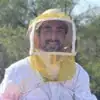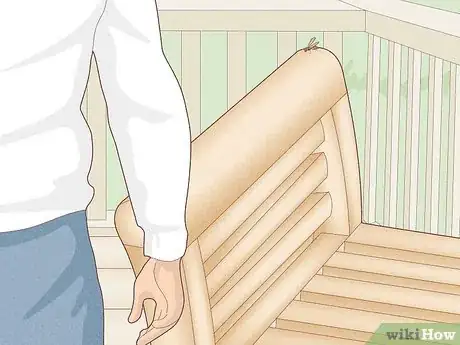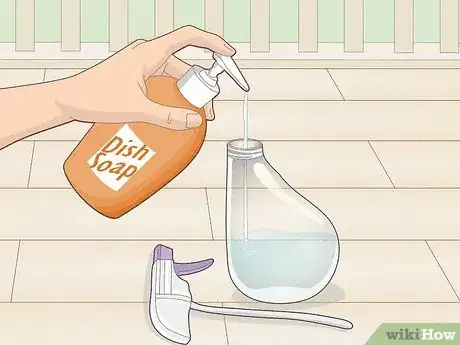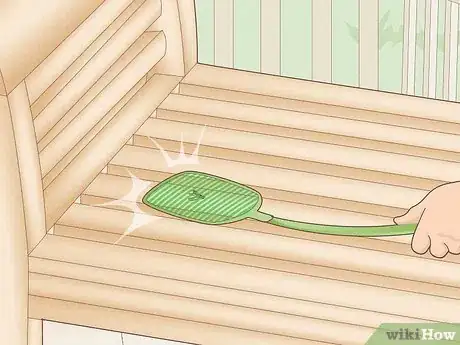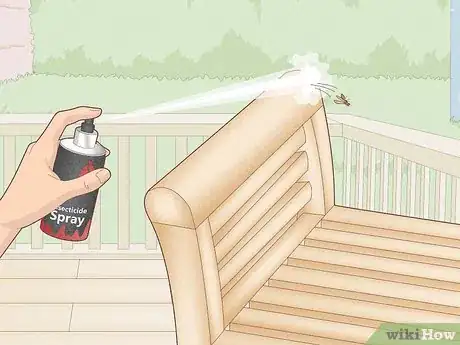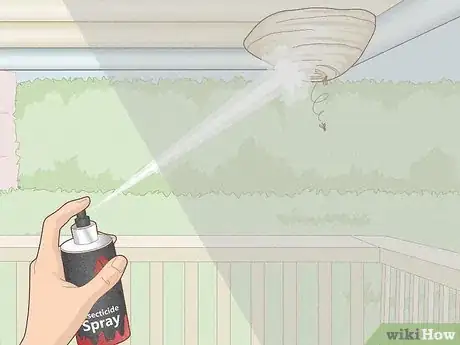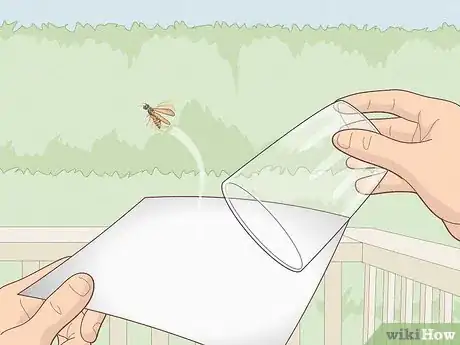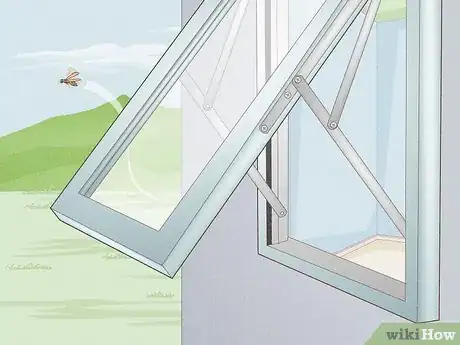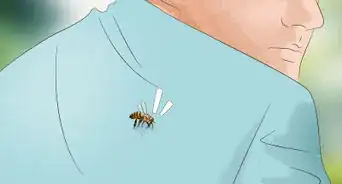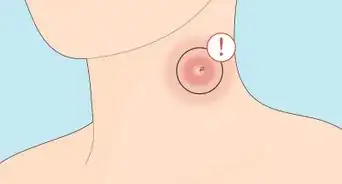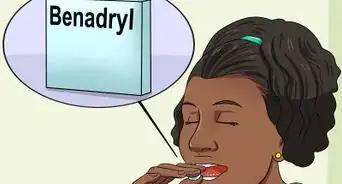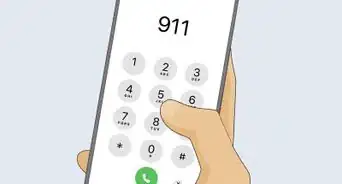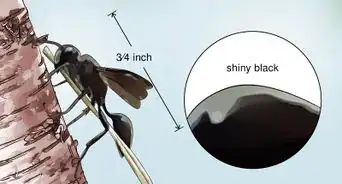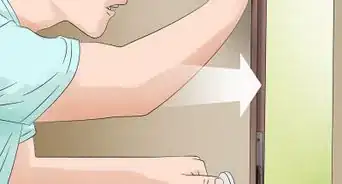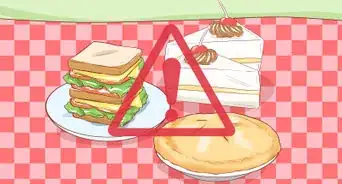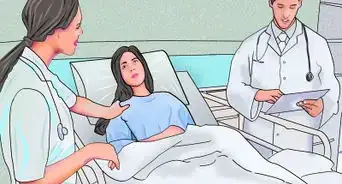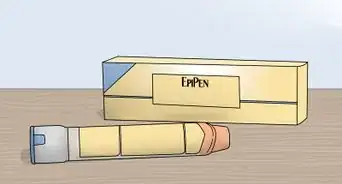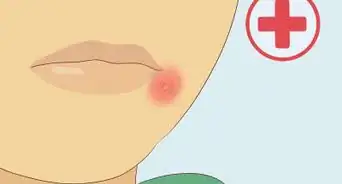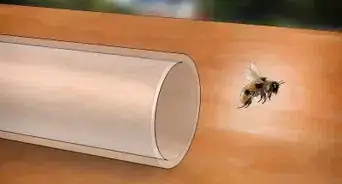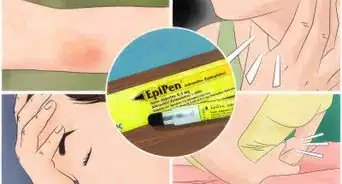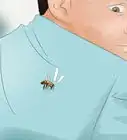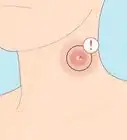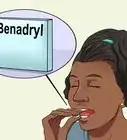This article was co-authored by Steve Downs and by wikiHow staff writer, Eric McClure. Steve Downs is a Live Honey Bee Removal Specialist, Honey bee Preservationist, and the Owner of Beecasso Live Bee Removal Inc, a licensed bee removal and relocation business based in the Los Angeles, California metro area. Steve has over 20 years of humane bee capturing and bee removal experience for both commercial and residential locations. Working with beekeepers, agriculturalists, and bee hobbyists, Steve sets up bee hives throughout the Los Angeles area and promotes the survival of bees. He has a passion for honeybee preservation and has created his own Beecasso sanctuary where rescued bee hives are relocated and preserved.
There are 18 references cited in this article, which can be found at the bottom of the page.
This article has been viewed 33,206 times.
As scary and intimidating as they may be, wasps aren’t particularly smart and you should be able to get rid of a lone wasp or two without getting stung. However, as tempting as it may be to kill the wasp, this is probably your worst option if you want to avoid an attacking swarm of wasps. Many wasp species release pheromones when they feel threatened or die that can attract other wasps nearby, so it’s usually best get rid of them without using any lethal force. Still, if you’re looking to get out of a sticky wasp-related situation unscathed, we’ve got your back!
Steps
Expert Q&A
-
QuestionDo wasps attack people?
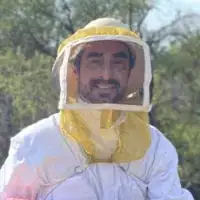 Steve DownsSteve Downs is a Live Honey Bee Removal Specialist, Honey bee Preservationist, and the Owner of Beecasso Live Bee Removal Inc, a licensed bee removal and relocation business based in the Los Angeles, California metro area. Steve has over 20 years of humane bee capturing and bee removal experience for both commercial and residential locations. Working with beekeepers, agriculturalists, and bee hobbyists, Steve sets up bee hives throughout the Los Angeles area and promotes the survival of bees. He has a passion for honeybee preservation and has created his own Beecasso sanctuary where rescued bee hives are relocated and preserved.
Steve DownsSteve Downs is a Live Honey Bee Removal Specialist, Honey bee Preservationist, and the Owner of Beecasso Live Bee Removal Inc, a licensed bee removal and relocation business based in the Los Angeles, California metro area. Steve has over 20 years of humane bee capturing and bee removal experience for both commercial and residential locations. Working with beekeepers, agriculturalists, and bee hobbyists, Steve sets up bee hives throughout the Los Angeles area and promotes the survival of bees. He has a passion for honeybee preservation and has created his own Beecasso sanctuary where rescued bee hives are relocated and preserved.
Live Bee Removal Specialist Wasps are a bit slow. They rarely attack people. But it is best to keep your distance.
Wasps are a bit slow. They rarely attack people. But it is best to keep your distance.
Warnings
- Do not attempt to kill a wasp if you’re allergic to their stings. Call a professional and let them handle it. If you are allergic and you get stung, seek medical help immediately if necessary.[23]⧼thumbs_response⧽
- There are two big problems with putting traps outside. For one, many traps will inadvertently kill bees, ladybugs, and other beneficial insects. On top of that, if it it’s a bait trap, you’re going to end up attracting more wasps than you’d otherwise have nearby.[24]⧼thumbs_response⧽
References
- ↑ Steve Downs. Live Bee Removal Specialist. Expert Interview. 23 February 2020.
- ↑ https://www.goodhousekeeping.com/home/a20707173/wasp-proof-your-yard/
- ↑ Steve Downs. Live Bee Removal Specialist. Expert Interview. 23 February 2020.
- ↑ https://www2.gov.bc.ca/gov/content/environment/pesticides-pest-management/managing-pests/insects/yellow-jackets
- ↑ https://www.chicagotribune.com/lifestyles/home-and-garden/ct-home-1010-garden-qa-20191004-5cgbhkbwnvfito2i6xf46wdgze-story.html
- ↑ https://pestguidance.com/soapy-water-kill-wasps/
- ↑ https://www2.illinois.gov/dnr/OI/Pages/BPTheAfternoontheWaspsWentDown.aspx
- ↑ https://agrilifeextension.tamu.edu/library/insects/paper-wasps-yellowjackets-and-solitary-wasps/
- ↑ https://www.bbc.com/news/uk-england-45272344
- ↑ https://www.bobvila.com/articles/best-wasp-spray/
- ↑ https://extension.umn.edu/yard-and-garden-news/late-summer-wasp-nests
- ↑ https://extension.umn.edu/yard-and-garden-news/late-summer-wasp-nests
- ↑ http://ipm.ucanr.edu/PMG/PESTNOTES/pn7450.html
- ↑ http://ipm.ucanr.edu/PMG/PESTNOTES/pn7450.html
- ↑ https://www.doh.wa.gov/communityandenvironment/pests/beesandwasps
- ↑ https://www.chicagotribune.com/lifestyles/home-and-garden/ct-home-1010-garden-qa-20191004-5cgbhkbwnvfito2i6xf46wdgze-story.html
- ↑ https://blog-fruit-vegetable-ipm.extension.umn.edu/2021/08/keeping-wasps-away-from-wine-grapes.html
- ↑ https://www.doh.wa.gov/communityandenvironment/pests/beesandwasps
- ↑ Steve Downs. Live Bee Removal Specialist. Expert Interview. 23 February 2020.
- ↑ https://entomology.ca.uky.edu/ef620
- ↑ https://www.flick.com.au/blog/how-to-remove-a-wasp-from-your-home/
- ↑ https://www.cdc.gov/niosh/topics/insects/beeswasphornets.html
- ↑ https://acaai.org/allergies/allergic-conditions/insect-sting-allergies/
- ↑ https://catalog.extension.oregonstate.edu/sites/catalog/files/project/pdf/em9211.pdf

